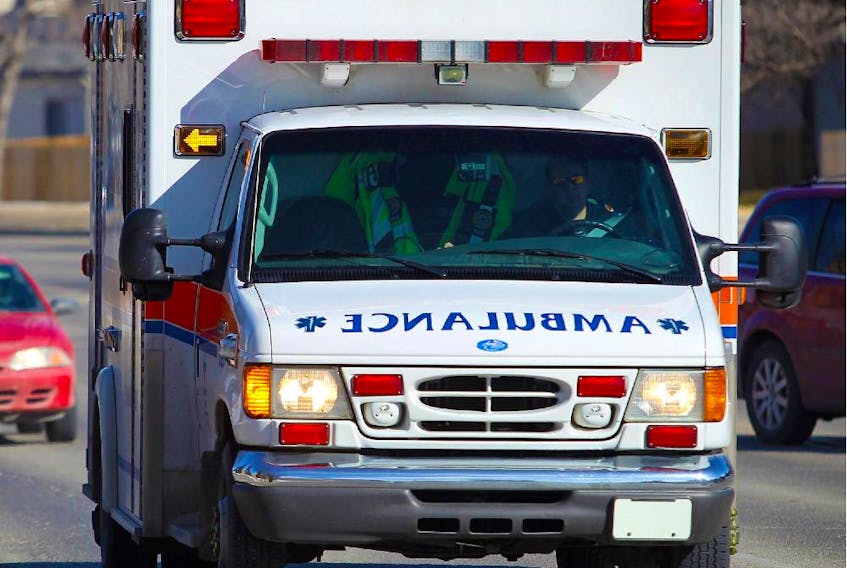Do you hear that clamour?
Alarm bells clanging, sirens wailing, lights flashing?
That’s a distress signal being raised by the Newfoundland and Labrador Association of Public and Private Employees about the number of ambulances available in the area of the province served by Eastern Health.
Based on information it received from an access request, NAPE is warning that there aren’t enough, and says there are too many instances when an ambulance is called but there isn’t one available — a situation known as a red alert.
With a Level 1 red alert, someone calls for an ambulance but there isn’t one on hand. A Level 2 red alert refers to a period when there were no ambulances available, but a call did not come in.
NAPE president Jerry Earle laid out the numbers in a news release Wednesday: “there were an alarming 341 red alert incidents in 2017. That number increased to 460 in 2018. There have been 156 red alerts in the first quarter of this year alone,” he said. “In other words, there were 957 instances in the past 28 months when an ambulance was not immediately available to respond to a call.”
Eastern Health offered context of its own, saying red alert data is being continuously analyzed to see when ambulance usage is highest, and policies and procedures are being adjusted accordingly.
Eastern Health encourages people to continue to call 911 in an emergency and says an ambulance will always be available as needed.
“In May 2019, there were 39 red alerts,” it said in a news release. “The monthly average number of red alerts for 2018 was 38.”
The health authority pointed out there are times when a red alert has been declared, but did not necessarily result in a crisis situation — such as where “a multi-patient incident could deplete the number of ambulances available for a short period while crews are responding.”
Eastern Health encourages people to continue to call 911 in an emergency and says an ambulance will always be available as needed.
But Earle says NAPE is worried about the effect the situation is having on its members’ mental health, given the pressure emergency responders feel, knowing they might not have adequate resources to meet demand.
It wants the Department of Health and the Eastern Health authority to take immediate action to bring the goal for the number of Red Alerts down to zero.
The health authority says that isn’t a reasonable goal for any emergency medical services system.
Zero may be an unachievable goal, but more than 30 red alerts per month sounds untenable as well.
There are obviously stresses on the system and on the people tasked with delivering it.
Let’s hope the steps Eastern Health is taking to respond to the pressure points gives emergency responders some breathing room, and the public full confidence that when they need an ambulance, one will be there.
Can we have an update before too long?
RELATED









